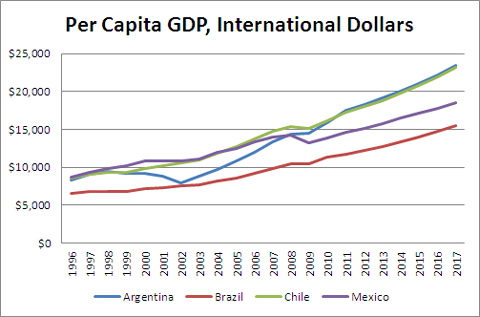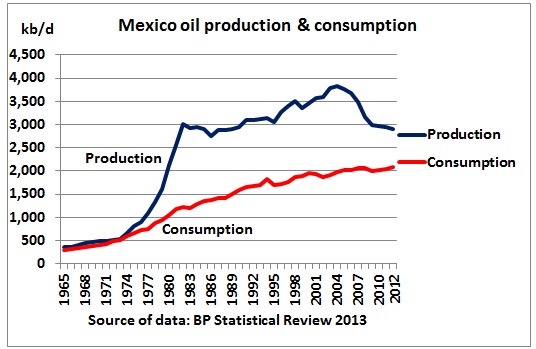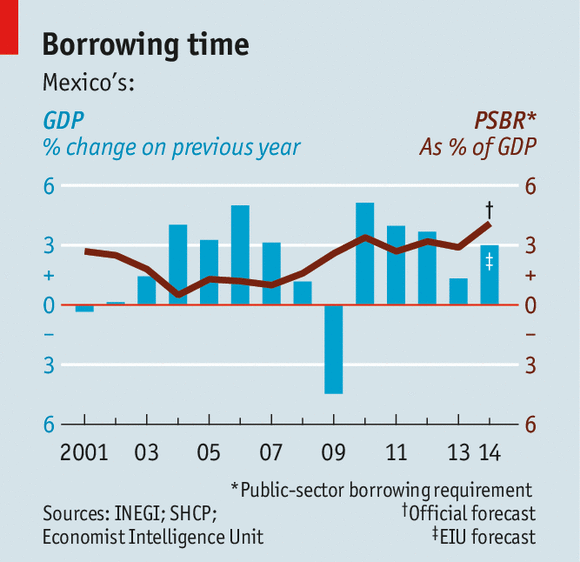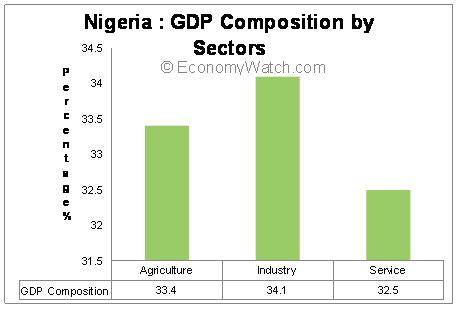Mexico's Economic System
Mexico's GDP
"Mexico is quickly becoming an emerging market heavy-weight. Its economic output, as measured by Gross Domestic Product (GDP) was $2.143 trillion in 2014. This was much less than its primary trading partner, the United States ($17.46 trillion) but larger than its other NAFTA partner, Canada ($1.579 trillion). Mexico's geographic size is equivalent to Saudi Arabia, but supports five times as many people while exporting 1/4 of the oil.Mexico's 2014 GDP growth rate was 2.4%, better than the 1.1% rate in 2013, but slower than the money percentage rate in 2012. Its standard of living, as measured by GDP per capita, was $17,900, less than half that of its other NAFTA partners. (Source: CIA Factbook)" more here

Mexico's Mixed Economy
Mexico is considered to have a mixed economy, infused with a market, traditional and command economy. Mexico's exports and and manufacturers are what determines Mexico's economic success. It's economy has become increasingly oriented toward manufacturing since entering the North American Free Trade Agreement (NAFTA).Mexico's economy is reliant on its domination on the manufacturing, oil and electronic, industry in Latin America.
Mexico's foreign trade is a larger percentage of its economy than any other large country. Mexico's largest export is manufactured products. It produces and exports great amounts of oil, about nearly 3 million barrels per day. Pemex, directed by Juan José Suárez Coppel, has a monopoly on the oil and gas industry. It also is one of the largest manufacturing industry, especially to the United States, although it is being greatly effected by China's exports to the U.S. Currently, there has been a higher demand in the auto manufacturing sector, causing improvements in foreign investments. More here


Mexico also has a commanding economy. Although the market has a greater influence on the economy, the government promoted the nationalization of the oil industry and caused a great increase in the GDP.
"Mexico's current government, led by President Enrique PENA NIETO, emphasized economic reforms during its first two years in office, passing and implementing sweeping education, energy, financial, fiscal and telecommunications reform legislation, among others, with the long-term aim to improve competitiveness and economic growth across the Mexican economy. " more here
The traditional aspect of the economy is concentrated on productions in agriculture and in the workforce.Although it only makes up just 3.3 percent of the Mexican GDP, it employs as much as 13% Mexican workforce. "As many as 52 million people are estimated to live at or below the poverty line in Mexico. This has also led to a cultural phenomenon known as remittances, in which Mexicans are living abroad in nations with higher wages (often the United States) send money back to their families and friends still living in Mexico. This contributed an estimated $22.4 billion to the Mexican economy in 2012. " more here
Mexico group: Viridiana, Jose, Tzu-Huan, Tzu Heng
The traditional aspect of the economy is concentrated on productions in agriculture and in the workforce.Although it only makes up just 3.3 percent of the Mexican GDP, it employs as much as 13% Mexican workforce. "As many as 52 million people are estimated to live at or below the poverty line in Mexico. This has also led to a cultural phenomenon known as remittances, in which Mexicans are living abroad in nations with higher wages (often the United States) send money back to their families and friends still living in Mexico. This contributed an estimated $22.4 billion to the Mexican economy in 2012. " more here
Mexico group: Viridiana, Jose, Tzu-Huan, Tzu Heng






